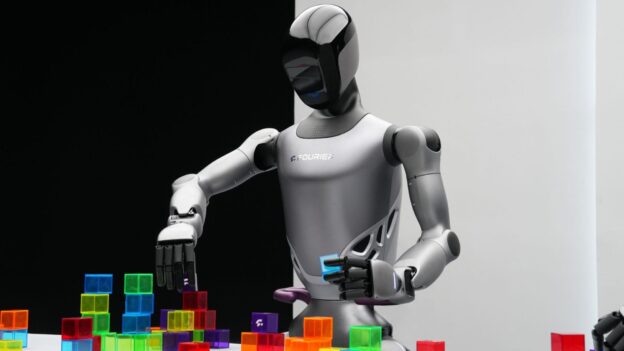Training humanoid robots to operate in fields that demand high levels of interaction and adaptability—such as scientific research, healthcare and manufacturing—can be a challenging and resource-intensive feat.
Fourier, a Shanghai-based robotics company, is doing the heavy lifting by developing advanced humanoid robots that can be integrated into real-world applications where precision and agility are critical.
The company announced the expansion of its GRx humanoid robot series with the launch of GR-2 in late September. Building on the previous-generation GR-1, the world’s first mass-produced humanoid robot, GR-2 features an upgraded hardware design, greater adaptability, advanced dexterity and a humanlike range of motion.
Developing humanoid robot GR-2 with NVIDIA Isaac Gym
To develop and test GR-2, the Fourier team turned to NVIDIA Isaac Gym (now deprecated) for reinforcement learning. They are currently porting their workflows to the recently launched NVIDIA Isaac Lab, an open-source modular framework for robot learning designed to simplify how robots adapt to new skills.
Sim-to-real learning has become essential for robotics, especially for complex movements like sitting down, getting up, or even dancing. With Isaac Gym, Fourier was able to simulate real-world conditions, minimizing the time and cost of testing and maintenance.
The team simulated complex multi-robot scenarios and real-world environments, leading to more robust AI decision-making and enhanced real-world performance—even in unpredictable settings. Fourier also used Isaac Gym to pretrain grasping algorithms, simulating success rates before deployment. This approach significantly reduces the real-world trial and error, saving time and resources.
Optimizing AI for real-world robotics
While training GR-2 for the floor-to-stand maneuver, Fourier simulated the physical demands required for completing tasks at different levels of elevation. By replicating the GR-2 model, they tested how it performs under various settings and completed 3,000 iterations in around 15 hours, a notable reduction compared to traditional training methods. When transferred directly to GR-2’s physical controls, the model’s action tensors achieved an 89% success rate.
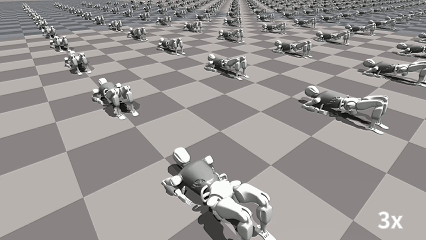
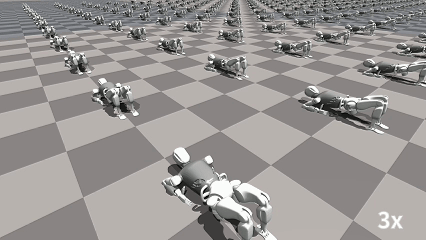
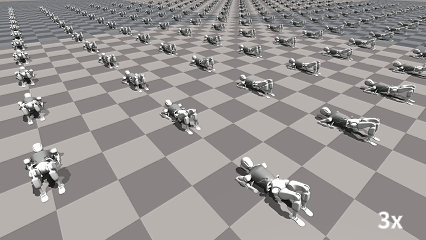
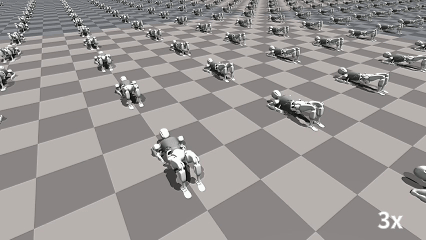
To enhance the development process, the team tapped the NVIDIA TensorRT software development kit for real-time inference optimization, CUDA libraries for parallel processing, and the NVIDIA cuDNN library for accelerating deep learning frameworks like PyTorch.
Moving to NVIDIA Isaac Lab will enable Fourier to train more complex algorithms and simulations in multiphysics virtual environments powered by NVIDIA RTX tiled rendering.
Exploring next-generation robotic capabilities
By adopting NVIDIA technologies, Fourier significantly reduced model training times and improved the accuracy of simulations, which resulted in enhanced collaboration across its engineering and R&D teams.
NVIDIA tools also opened the door to complex AI functions like language models and predictive analytics, previously too resource-heavy to implement.
“The advancements we’ve achieved are pushing the boundaries of what’s possible in humanoid robotics,” said Fourier CEO Alex Gu.
“By improving the robot’s real-time motion control and AI-driven decision-making, we are setting new standards for human-robot interaction across industries such as the service sector, academic research, and medical rehabilitation.”
Learn more about Fourier GR-2 humanoid robots.
Get started
Need to migrate from NVIDIA Isaac Gym to NVIDIA Isaac Lab? Check out the Isaac Lab Migration Guide. If you’re a first-time user of Isaac Lab, see the Getting Started Developer’s Guide. Discover the latest in robot learning and simulation in the November 13 livestream, OpenUSD Insider Livestream – Robot Sim and Learning. And don’t miss the NVIDIA Isaac Lab Office Hours for hands-on support and insights.
Spotlight: Fourier Trains Humanoid Robots for Real-World Roles Using NVIDIA Isaac Gym




